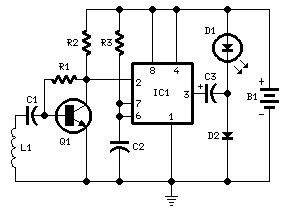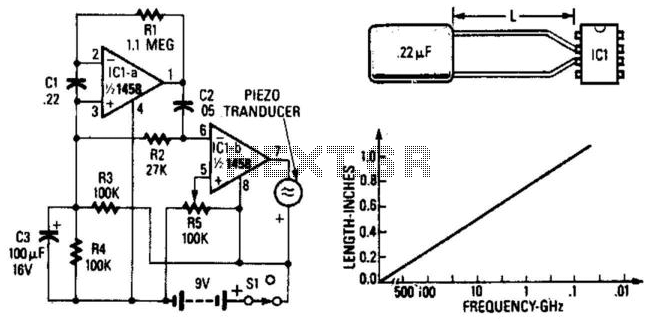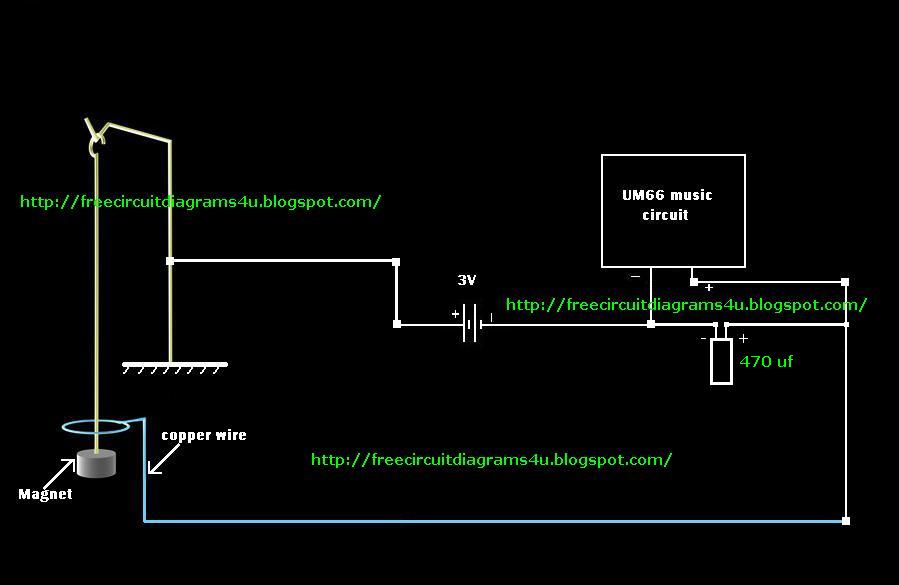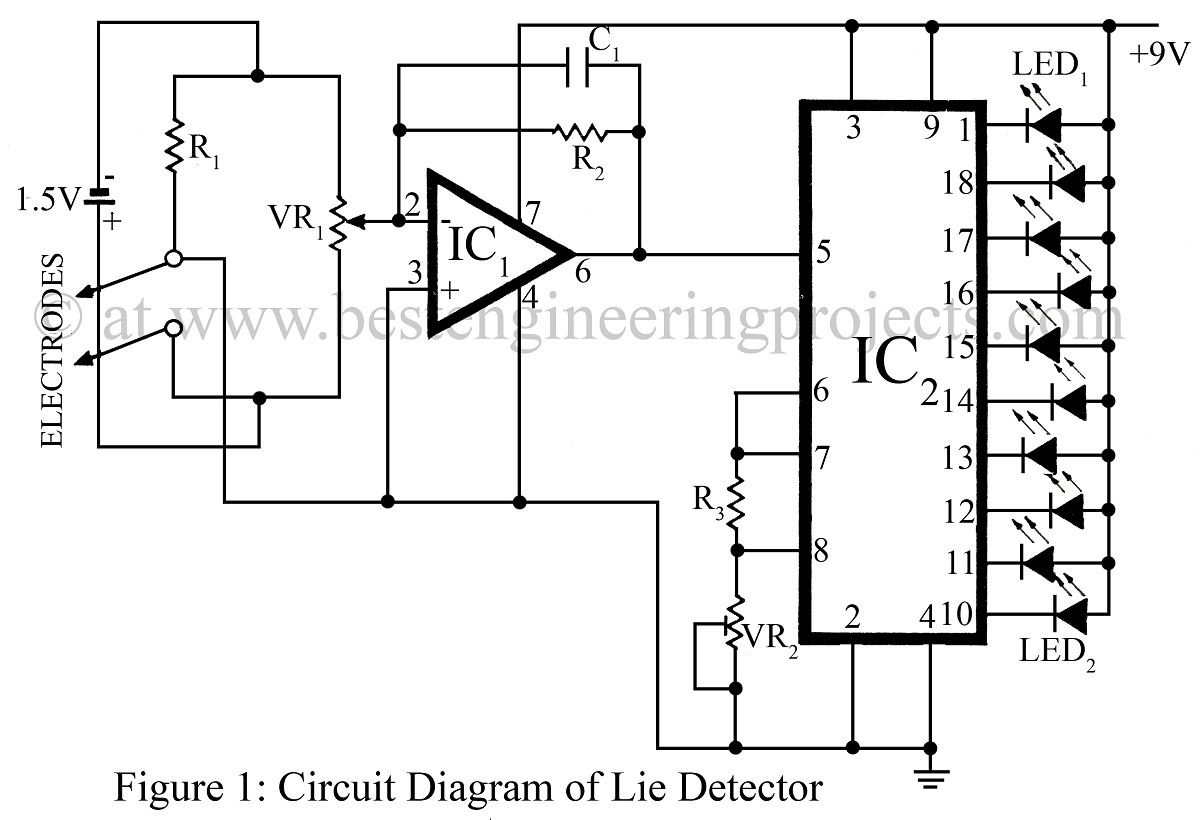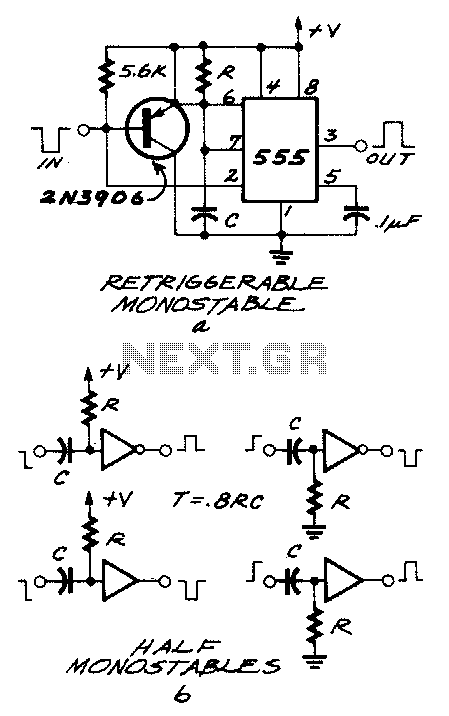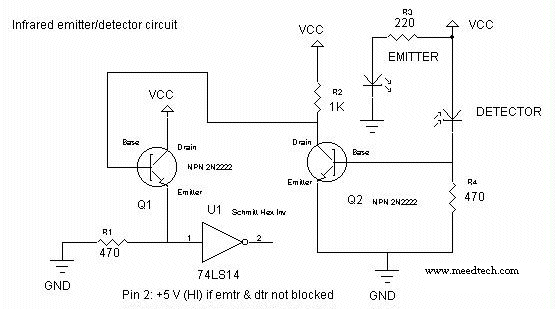
Sensitive Electrostatic detector
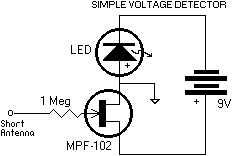
This simple circuit can detect the invisible fields of voltage which surround all electrified objects. It acts as an electronic "electroscope." Regular foil-leaf electroscopes deal with electrostatic potentials in the range of many hundreds or thousands of volts. The above device can detect one volt. Its sensitivity is ridiculously high. Since "static electricity" in our environment is actually a matter of high voltage, this device can sense those high-voltage electrically charged objects at a great distance. On a low-humidity day and with a 1/2 meter antenna wire, its little LED-light will respond strongly when someone combs their hair at a distance of five meters or more. If a metal object is lifted up upon a non-conductive support and touched against the sensor wire, the sensor can detect whether that object has an electrostatic potential of as little as one volt!
This circuit operates on the principle of electrostatic detection using a high-impedance input to sense minute voltage levels. The core components typically include a sensitive field-effect transistor (FET) or an operational amplifier configured as a voltage follower, which provides the necessary gain without loading the sensor. The antenna wire, often half a meter in length, serves as a collector of ambient electrostatic fields, converting these fields into a measurable voltage.
The output of the circuit is connected to a light-emitting diode (LED), which visually indicates the presence of an electrostatic charge. The LED will illuminate when the detected voltage exceeds the threshold of one volt, demonstrating the circuit's high sensitivity. The circuit may also incorporate a resistor in series with the LED to limit current and prevent damage to the LED.
To enhance performance, the circuit can be housed in a non-conductive enclosure to minimize interference from external electromagnetic fields. Proper grounding techniques should be employed to ensure accurate readings, and the use of a shielded cable for the antenna may help reduce noise from external sources.
This device is particularly useful in educational settings for demonstrating electrostatic principles, as well as in practical applications where monitoring static electricity is essential, such as in clean rooms or environments sensitive to electrostatic discharge. The ability to detect electrostatic potentials at significant distances makes it a valuable tool for both experimentation and everyday use.This simple circuit can detect the invisible fields of voltage which surround all electrified objects. It acts as an electronic "electroscope." Regular foil-leaf electroscopes deal with electrostatic potentials in the range of many hundreds or thousands of volts.
The above device can detect one volt. Its sensitivity is ridiculously high. Since "static electricity" in our environment is actually a matter of high voltage, this device can sense those high-voltage electrically charged objects at a great distance. On a low-humidity day and with a 1/2 meter antenna wire, its little LED-light will respond strongly when someone combs their hair at a distance of five meters or more.
If a metal object is lifted up upon a non-conductive support and touched against the sensor wire, the sensor can detect whether that object has an electrostatic potential of as little as one volt! Note: I use the term "electrification" rather than "charging", in order to avoid confusion between electric charge and net-charge.
"Charge" is the stuff on the negative electrons and positive protons, while "net-charge" is the imbalance between positive and negative particles which appears on everyday objects. A avoid saying that everyday objects become electrically charged. After all, their atoms are always full of charges. Instead they become "electrified" whenever their pre-existing + and - charges are not equal. 🔗 External reference
This circuit operates on the principle of electrostatic detection using a high-impedance input to sense minute voltage levels. The core components typically include a sensitive field-effect transistor (FET) or an operational amplifier configured as a voltage follower, which provides the necessary gain without loading the sensor. The antenna wire, often half a meter in length, serves as a collector of ambient electrostatic fields, converting these fields into a measurable voltage.
The output of the circuit is connected to a light-emitting diode (LED), which visually indicates the presence of an electrostatic charge. The LED will illuminate when the detected voltage exceeds the threshold of one volt, demonstrating the circuit's high sensitivity. The circuit may also incorporate a resistor in series with the LED to limit current and prevent damage to the LED.
To enhance performance, the circuit can be housed in a non-conductive enclosure to minimize interference from external electromagnetic fields. Proper grounding techniques should be employed to ensure accurate readings, and the use of a shielded cable for the antenna may help reduce noise from external sources.
This device is particularly useful in educational settings for demonstrating electrostatic principles, as well as in practical applications where monitoring static electricity is essential, such as in clean rooms or environments sensitive to electrostatic discharge. The ability to detect electrostatic potentials at significant distances makes it a valuable tool for both experimentation and everyday use.This simple circuit can detect the invisible fields of voltage which surround all electrified objects. It acts as an electronic "electroscope." Regular foil-leaf electroscopes deal with electrostatic potentials in the range of many hundreds or thousands of volts.
The above device can detect one volt. Its sensitivity is ridiculously high. Since "static electricity" in our environment is actually a matter of high voltage, this device can sense those high-voltage electrically charged objects at a great distance. On a low-humidity day and with a 1/2 meter antenna wire, its little LED-light will respond strongly when someone combs their hair at a distance of five meters or more.
If a metal object is lifted up upon a non-conductive support and touched against the sensor wire, the sensor can detect whether that object has an electrostatic potential of as little as one volt! Note: I use the term "electrification" rather than "charging", in order to avoid confusion between electric charge and net-charge.
"Charge" is the stuff on the negative electrons and positive protons, while "net-charge" is the imbalance between positive and negative particles which appears on everyday objects. A avoid saying that everyday objects become electrically charged. After all, their atoms are always full of charges. Instead they become "electrified" whenever their pre-existing + and - charges are not equal. 🔗 External reference
